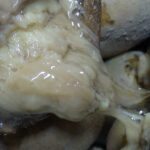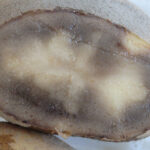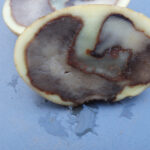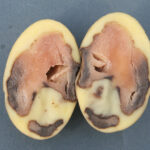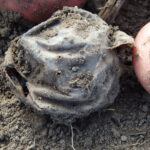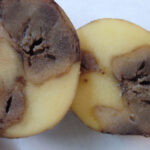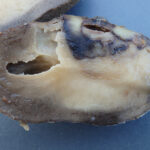Polish name: Wodnista zgnilizna przyranowa
English name: Leak, watery wound rot
Kod EPPO: PYTHUU
The causative agents of the disease are:
- Pythium ultimum
- Pythium debaryanum
Gallery
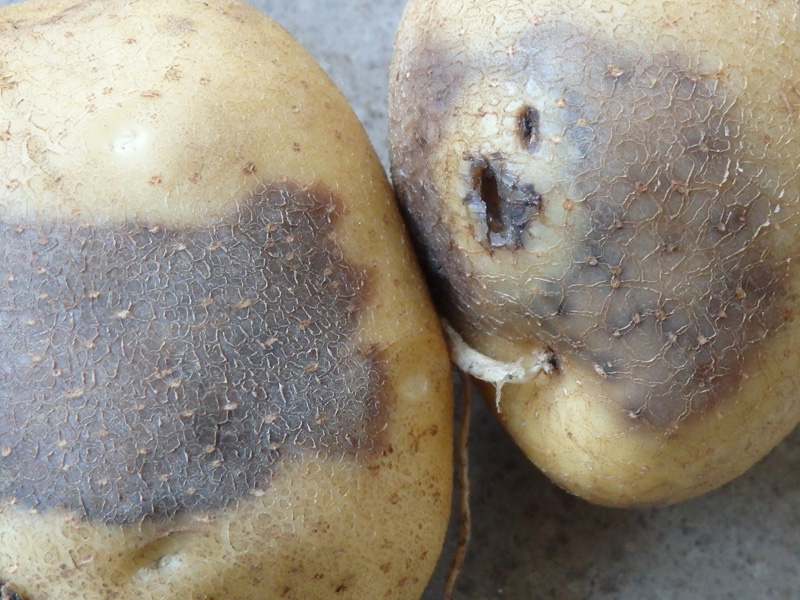
Pythium. Development of infection around a wound on the skin
(photo by J. Osowski)
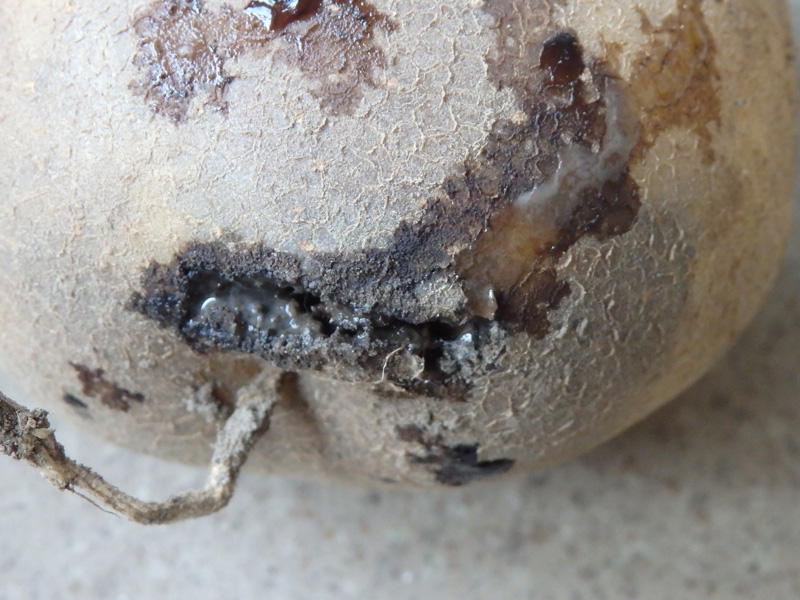
Pythium. Fluid leakage after epidermal damage
(photo by J. Osowski)
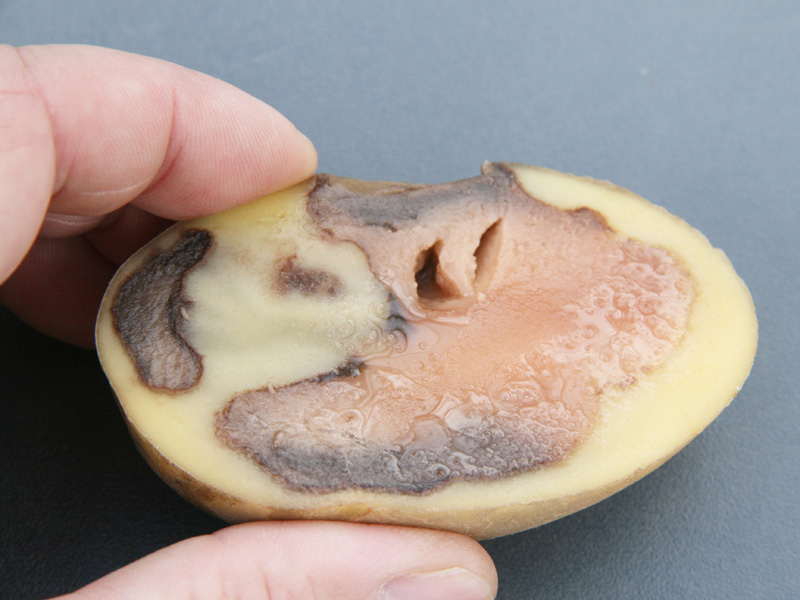
Pythium. Leakage of fluid after squeezing the tuber
(photo by S. Wróbel)
- Mokra zgnilizna. Wyciek śluzu (fot. J. Osowski)
- Pythium. Barwa chorej tkanki po przekrojeniu bulwy (fot. J. Osowski)
- Pythium. Ciemna linia graniczna oddzielająca tkankę chorą od zdrowej (fot. J. Osowski)
- Pythium. Ciemna linia graniczna oddzielająca tkankę chorą od zdrowej (fot. S. Wróbel)
- Pythium. Pozostałość po całkowitym zniszczeniu bulwy przez sprawcę choroby (fot. J. Osowski)
- Pythium. Tworzenie się komór wewnątrz chorej tkanki (fot. J. Osowski)
- Pythium. Wygląd bulwy wtórnie zainfekowanej przez bakterie mokrej zgnilizny (fot. J. Osowski)
Characteristics and description of the disease
The disease develops only on tubers. Infection most commonly occurs through immature skin or any kind of creases, abrasions, bruises, or mechanical damage to the tuber skin. On the skin surface, a water-soaked spot of grayish color forms, and when the skin is damaged, a fluid leak occurs, resembling water in appearance (hence the name of the disease), in contrast to wet rot, where slime is released from the torn skin. Internally, the diseased tissue is clearly demarcated from the healthy tissue by a dark boundary line. The spongy decayed tissue is wet, and cavities may form (photo 5). When the tuber is cut and exposed to air, its color gradually changes to gray, brown, and finally almost black, occasionally with a pinkish hue. The infected tissue has a gray matte color. After infection, especially at elevated temperatures, the tuber can completely rot within a few days. In storage or during the growing season, after the complete destruction of tubers by the pathogen, what remains of the infected tubers resembles shell-like husks with a thin papery skin (photo 7). Secondary infections by other pathogens, such as bacteria, which can distort the true picture of the disease, also contribute to the difficulty of diagnosis. The disease can intensify on cut seed tubers, which are more susceptible to infection, especially when the soil temperature rises.
The disease occurs more severely in years with uneven rainfall distribution (prolonged periods of drought followed by sudden heavy rainfall) and when tubers are harvested before the skin matures, especially at high soil temperatures (above 21°C). Improper storage conditions (excessive temperatures and lack of ventilation) also favor the development of infection. The disease’s causal agent, the fungus Pythium ultimum, produces oospores (resistant spores) that can survive in the soil for several years and continue to infect tubers after this time.
Prevention:
- Use healthy, certified seed material for planting.
- Avoid cutting tubers; if necessary, perform this operation several days before planting to allow a cork layer to form. Do not plant cut material in heavy, moisture-retaining soils.
- Harvest after skin maturity (skin does not peel under thumb pressure) and at temperatures above 10°C.
- Avoid damaging tubers during harvesting and transportation.
- Properly prepare tubers for storage and store them at the correct temperature and humidity. Essential for the long-term storage preparation is drying (conditioning) at around 18-20°C for 1-2 weeks. Damaged skin rebuilds at a temperature of about 21°C within 3-4 days under appropriate humidity and aeration conditions; at lower temperatures, this process takes much longer. At 15°C, close to the optimum for infection development, the skin rebuilding process takes approximately 8 days; at lower temperatures, it is not effective. After this time, which promotes skin corking and healing of injuries, sort and remove strongly damaged tubers or those showing disease symptoms.
- Store potatoes at appropriate temperatures.
Compiled by: Dr. Eng. Jerzy Osowski

